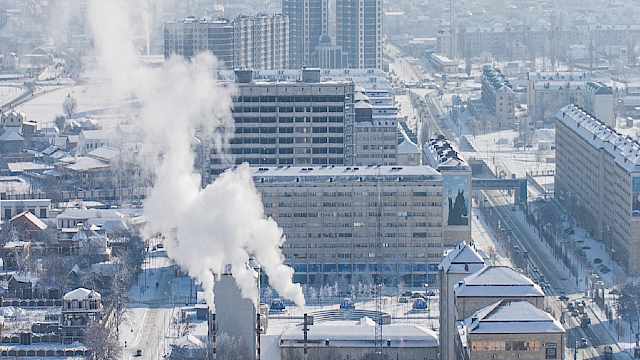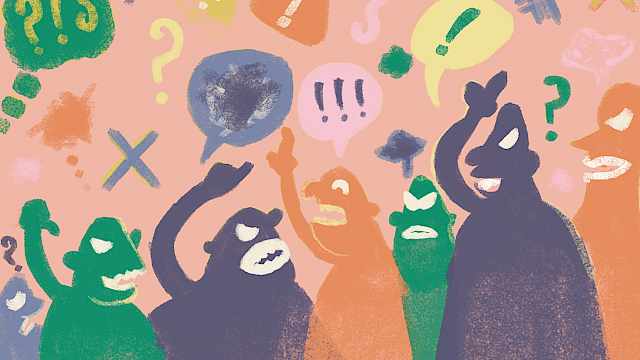Countering violent extremism
Academic Publications
The development of structured guidelines for assessing risk in extremist offenders
This paper describes a methodology developed by the National Offender Management Service (NOMS) to assess risk and needs in convicted extremist offenders in England and Wales, and for the assessment of those offenders for whom there are credible concerns about their potential to commit such offences. A methodology was needed to provide an empirically-based systematic and transparent approach to the assessment of risk to inform proportionate risk management; increase understanding and confidence amongst front-line staff and decision-makers, and facilitate effective and targeted intervention. It outlines how the methodology was developed, the nature of the assessment, its theoretical underpinnings, the challenges faced and how these have been addressed. Learning from casework with offenders, from government commissioned research and the wider literature is presented in the form of 22 general factors (with an opportunity to capture additional idiosyncratic factors, i.e., 22+) that contribute to an individual formulation of risk and needs that bears on three dimensions of engagement, intent and capability. The relationship of this methodology, the Extremism Risk Guidelines (ERG 22+) with comparable guidelines, the Violent Extremism Risk Assessment 2 (VERA version 2) and the Multi-Level Guidelines (MLG), is also discussed. This paper also considers the ERG’s utility, validity and limitations.
(From the journal abstract)
Lloyd, M., & Dean, C. (2015). The development of structured guidelines for assessing risk in extremist offenders. Journal of Threat Assessment and Management, 2(1), 40–52.
Community reporting on violent extremism by 'intimates': emergent findings from international evidence
To promote early intervention strategies, Countering/Preventing Violent Extremism (C/PVE) policies internationally seek to encourage community reporting by 'intimates' about someone close to them engaging in terrorist planning.
Yet historically, we have scant evidence around what either helps or hinders intimates to share concerns with authorities. We address that deficit here through a state-of-the-art assessment of what we currently know about effective related C/PVE approaches to community reporting, based on key findings from a groundbreaking Australian study and its UK replication.
The consistency of qualitative findings from nearly 100 respondents offers new paradigms for policy and practice.
(From the journal abstract)
Paul Thomas, Michele Grossman, Kris Christmann, and Shamim Miah, 2020. Community reporting on violent extremism by 'intimates': emergent findings from international evidence. Critical Studies on Terrorism. https://doi.org/10.1080/17539153.2020.1791389
ISIS Propaganda: A Full-Spectrum Extremist Message
This book offers a comprehensive overview and analysis of the Islamic State's use of propaganda.
Combining a range of different theoretical perspectives from across the social sciences, and using rigorous methods, the authors trace the origins of the Islamic State's message, laying bare the strategic logic guiding its evolution, examining each of its multi-media components, and showing how these elements work together to radicalize audiences' worldviews.
This volume highlights the challenges that this sort of "full-spectrum propaganda" raises for counter terrorism forces. It is not only a one-stop resource for any analyst of IS and Salafi-jihadism, but also a rich contribution to the study of text and visual propaganda, radicalization and political violence, and international security.
(From the book abstract)
Stephane J. Baele, Katharine A. Boyd, and Travis G. Coan. 2020. ‘ISIS Propaganda: A Full-Spectrum Extremist Message’. Oxford, New York: Oxford University Press. ISBN: 9780190932459
‘Russia’ In Routledge Handbook of Terrorism and Counterterrorism
This chapter on 'Russia' is one of a series of case studies in the Routledge Handbook of Terrorism and Counterterrorism. The following description is from the publisher's website.
This new Handbook provides a comprehensive, state-of-the-art overview of current knowledge and debates on terrorism and counterterrorism, as well as providing a benchmark for future research.
The attacks of 9/11 and the ‘global war on terror’ and its various legacies have dominated international politics in the opening decades of the 21st century. In response to the dramatic rise of terrorism, within the public eye and the academic world, the need for an accessible and comprehensive overview of these controversial issues remains profound. The Routledge Handbook of Terrorism and Counterterrorism seeks to fulfil this need. The volume is divided into two key parts:
Part I: Terrorism: This section provides an overview of terrorism, covering the history of terrorism, its causes and characteristics, major tactics and strategies, major trends and critical contemporary issues such as radicalisation and cyber-terrorism. It concludes with a series of detailed case studies, including the IRA, Hamas and Islamic State.
Part II: Counterterrorism: This part draws on the main themes and critical issues surrounding counterterrorism. It covers the major strategies and policies, key events and trends and the impact and effectiveness of different approaches. This section also concludes with a series of case studies focused on major counterterrorism campaigns.
This book will be of great interest to all students of terrorism and counterterrorism, political violence, counter-insurgency, criminology, war and conflict studies, security studies and IR more generally.
(From the book abstract)
Cerwyn Moore. 2019. ‘Russia’. In Routledge Handbook of Terrorism and Counterterrorism, edited by Andrew Silke, 1st Edition, 604–14. Abingdon: Routledge. https://www.routledge.com/Routledge-Handbook-of-Terrorism-and-Counterterrorism-1st-Edition/Silke/p/book/9781138819085.
Violent Extremism: A Comparison of Approaches to Assessing and Managing Risk
The task of assessing and managing risk of violence has evolved considerably in the last 25 years, and the field of violent extremism has the potential to stand on the shoulders of the giants of this time. Therefore, the objective of this study was to identify good practice in the risk field and to apply that to the specific area of risk in relation to violent extremism – in order that developments here accord to highest standards of practice achieved so far elsewhere.
Method and Results
We begin by addressing the essential requirement to define the task of assessing and managing the risk of violent extremism – What is its purpose and parameters, who are its practitioners, in what contexts is this activity delivered, and how might any such context both facilitate and hinder the objectives of the task? Next, we map the terrain – What guidance is already available to assist practitioners in their work of understanding and managing the risk of violent extremism, and by what standards may we judge the quality of this and future guidance in the contexts in which is it applied? Finally, we explore options for the development of the field in terms of the empirical basis upon which the risks presented by individuals and the organizations to which they may affiliate are assessed, understood, and managed.
Conclusions
Recommendations are proposed in relation to each of these three areas of concern with a view to supporting the rapid and credible advancement of this growing and vital area of endeavour.
(From the journal abstract)
Caroline Logan and Monica Lloyd. 2019. ‘Violent Extremism: A Comparison of Approaches to Assessing and Managing Risk’. Legal and Criminological Psychology, 24 (1): 141–61. https://doi.org/10.1111/lcrp.12140.
Out with the Old and … In with the Old? A Critical Review of the Financial War on Terrorism on the Islamic State of Iraq and Levant
This article critically considers the effectiveness of the ‘Financial War on Terrorism’ on the funding streams of the Islamic State of Iraq and Levant (ISIL).
The next section of the article highlights how the international community concentrated on tackling money laundering prior to the terrorist attacks in September 2001 and how this policy dramatically altered. In particular, this section concentrates on the development of and definition of the ‘Financial War on Terrorism’.
The final part of the article seeks to determine if the ‘Financial War on Terrorism’ is able to tackle the funding streams of ISIL.
(From the journal abstract)
Ryder, Nicholas. 2018. ‘Out with the Old and … In with the Old? A Critical Review of the Financial War on Terrorism on the Islamic State of Iraq and Levant’. Studies in Conflict & Terrorism 41 (2): 79–95. http://eprints.uwe.ac.uk/28343/.















































































































